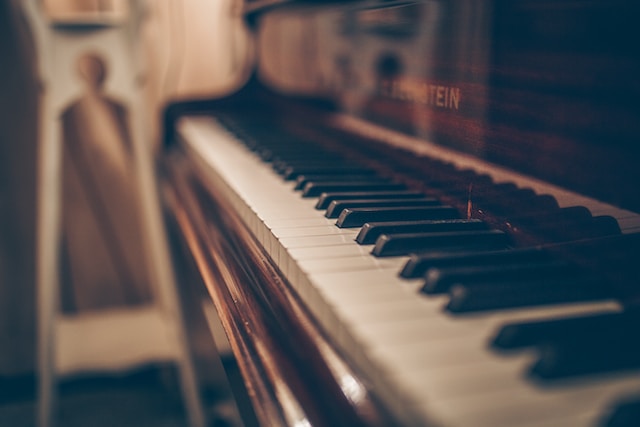The guitar and piano are two of the most popular instruments in the world, and many people choose to learn both. While the two instruments may seem very different, there are actually many similarities between them. In fact, learning to play the piano can have a number of benefits for guitarists. In this article, we will explore some of the advantages of learning piano for guitar players.
Table of Contents
Benefits of learning piano for guitarists
Learning to play the piano can help guitar players in a number of ways.
- It can improve their understanding of music theory and harmony, which is essential for any musician.
- Piano lessons can improve finger dexterity and strengthen fingers, which can be beneficial for playing guitar.
- It can improve the rhythmic sense and help the guitar players develop a better sense of timing and phrasing.
Techniques to borrowed from piano players
There are some techniques that guitarists can borrow from piano playing to improve their skills. One of the most important is the use of chord inversions. In piano playing, chord inversions are used to create different voicings of a chord, which can add depth and richness to a piece of music. Guitarists can use this same technique to create new and interesting chord progressions.
Another technique that guitarists can learn from piano playing is arpeggios. Arpeggios are broken chords that are played one note at a time, and they are a common technique in both piano and guitar playing. By practicing arpeggios on the piano, guitarists can improve their finger dexterity and strengthen their fingers, which can make it easier for them to play complex guitar solos.
Finger dexterity and finger strengthening
Enhancing finger dexterity and strengthening fingers are among the significant benefits that guitarists can gain from learning to play the piano.This is because the piano requires players to use all ten fingers to play, whereas the guitar only requires players to use four fingers. By practicing on the piano, guitarists can develop better finger independence, which can help them play more complex guitar parts.
Playing the piano can be advantageous for guitarists as it demands a considerable amount of hand and finger strength. By practicing on the piano, guitarists can strengthen their fingers and hands, which can make it easier for them to play for longer periods of time without experiencing fatigue.
Rhythmic sense and guitar playing
The piano is a polyphonic instrument, which means that it can play multiple notes at the same time. By practicing on the piano, guitarists can learn how to play multiple notes simultaneously, which can help them develop a better sense of timing and rhythm.
The piano, on the other hand, has a very percussive sound, which can help guitarists develop a better sense of timing and phrasing. By practicing on the piano, guitarists can learn how to play with a more percussive style, which can help them develop a better sense of timing and rhythm when playing guitar.
Can you play a piano piece on the guitar?
It is possible to play a piano piece on the guitar, but it may require some adaptations and modifications to make it playable on the guitar. The piano has a wide range of notes and can play multiple notes at the same time, which makes it challenging to translate piano music directly onto the guitar.
With some adjustments, a piano piece can be arranged for guitar and still retain its musical essence. It’s important to keep in mind that the arrangement process may require some music theory knowledge, as well as experimentation and creativity to find the best way to adapt the piece to the guitar
“Keytar”
The “keytar” is a musical instrument that combines elements of a keyboard and a guitar. It is essentially a keyboard that can be played in a guitar-like fashion, allowing the player to move around on stage and perform with more freedom than a traditional keyboardist.
While the keytar is not a piano, it does share some similarities in terms of its keyboard layout and the way it is played. Therefore, it is possible to incorporate piano elements into keytar playing, as well as guitar elements.
Overall, the keytar offers a unique and creative way to incorporate piano and guitar elements into a musical performance. It can add a new level of excitement and energy to a show, and is a great instrument for musicians who want to experiment with different styles and sounds.
Final thoughts
Learning to play the piano can have a number of benefits for guitarists. Not only can it improve their understanding of music theory and harmony, but it can also improve their finger dexterity and strengthen their fingers. Additionally, it can improve their rhythmic sense and help them develop a better sense of timing and phrasing. So if you are a guitarist looking to improve your skills, consider picking up a piano and practicing regularly. It may just be the key to unlocking your full potential as a musician.


